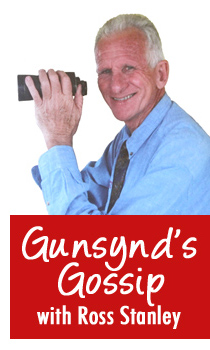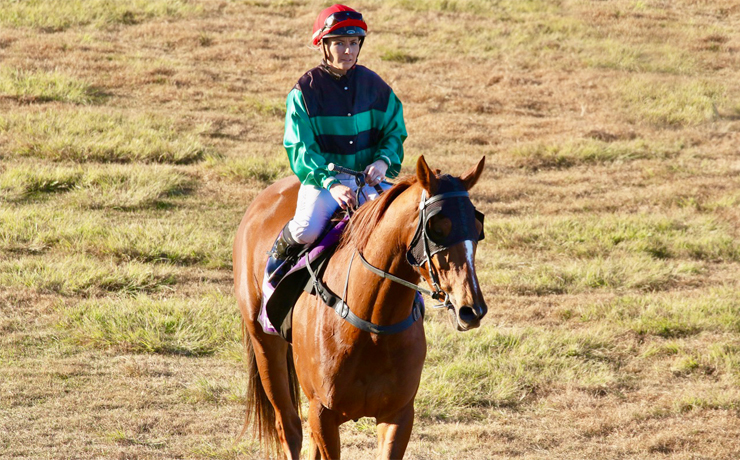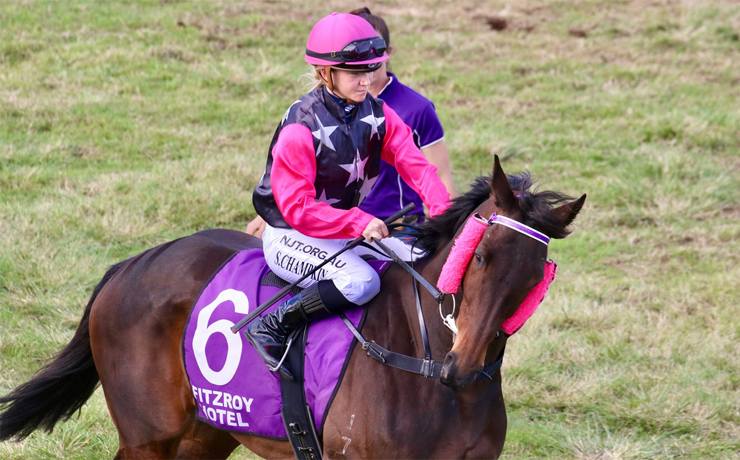

February 3, 2023
Nanango Race Club’s first fixture for 2023 – on Saturday, February 11 – will again feature the popular Pretty In Pink theme.
It fits in nicely as a curtainraiser to Valentine’s Day on the following Tuesday.
The good news for country connections is that the base prizemoney for non-TAB meetings has risen from $8500 to $10,000 per race. It is not much of an increase but it is a step in the right direction.
The upcoming Lee Park card is certainly bolstered by the bonus money attached to the Maiden Plate (1000m).
In short, QTIS registered horses are eligible for the following extras : Fillies and mares placed first, second and third score an extra $12,050; $3300 and $1650 respectively while the males are allocated $10,300; $2800 and $1400.
The standard returns for non-registered runners are $6800; $1800 and $900.
The contest should attract plenty of nominations when entries close on Tuesday.
* * *

Some Recent Winners
It is pleasing to report that Nanango trainer Kaye Hill has collected two wins in a row with her chestnut charge, Prince of Diamonds.
The sparingly raced five-year-old by Moshe prevailed at Esk on December 17 for Brendon Newport.
When partnered with Nicole Vuille for Dalby’s offering on January 20, the $11 shot scored again.
Six days later on Australia Day, The Angels Kiss, prepared at Lee Park by Adam Briskey and ridden by Lilli Barr, deservedly broke through at Kilcoy’s non-TAB meeting.
The Briskey yard has recorded numerous placings since The Knight put a sword to his rivals in September at Gympie.
Meanwhile, Wondai trainer Kym Afford made his numbers count at Bundaberg on January 28. In the Open Handicap (1212m), he saddled up Flick (third), Mount Horeb (fourth), Gossiaux (fifth) and the $2.40 winner Daunting Warrior. The only other candidate was the runner-up Alatar.
The side’s previous success was also achieved by Daunting Warrior.
That was on December 10 at the same track in Benchmark 60 company. Shania Willis was the pilot both times.

* * *
A Change Towards A Cleaner Climate
A Queensland Racing Integrity Commission statement on February 1 is welcome news.
Under the headline “Horse racing cracks down on drug cheats with new screening limit,” the QRIC documented a tightening of medication requirements.
The full statement:
The racing industry’s latest move to crack down on drug cheats is to reduce the screening limit for the equine drug clenbuterol.
Veterinarians prescribe clenbuterol to treat equine airway disease as a bronchodilator, however, in high doses it mimics the muscle-building properties of anabolic steroids.
In accordance with a new International Screening Limit, Racing Australia has adopted a new, lower screening limit for clenbuterol that will apply to the thoroughbred and harness racing codes.
The Queensland Racing Integrity Commission Analytical Services will implement the lowered screening limit of 0.1 nanogram/ml in urine from April 1, 2023.
This will increase the detection window to at least 13 days for oral administration and six days when it is nebulised, an increase from 3-4 days (oral) and two days (nebulised) under the current screening limit.
QRIC Commissioner Shane Gillard said that clenbuterol can still be administered to racing animals for medical purposes, as prescribed by a veterinarian.
“Due to the drug’s side effects, participants who administer high doses of clenbuterol can gain an unfair advantage when racing,” he said.
“The lowered screening limit has been introduced to deter the misuse of registered products to take advantage of the anabolic steroid side-effect but will have a marginal impact on those using these preparations in accordance with the manufacturer’s treatment guidance.
“I encourage all participants across thoroughbred and harness racing codes to ensure their treatment protocols align with the new screening limit, as those found to be non-compliant will be penalised.”
Veterinarians treating registered racing animals with clenbuterol are advised to apply a suitable safety margin when administering the drug, to avoid the treated horse providing a sample that inadvertently exceeds the revised screening limit.
This safety margin should be based on the circumstances of the administration, including the dose, route of administration and the preparation administered.























